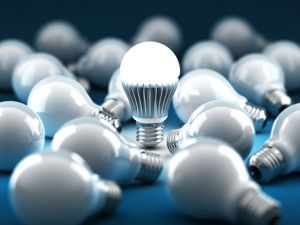If you want to reduce your home’s electricity usage, the first step is to work out where you use the most power. Once you know where you’re being wasteful, it’s an easy step to implement power-saving and bill-slashing reductions.
When assessing your household’s power usage, keep in mind that small changes can add up to long-term gains. From the kitchen to the living room, there are savings to be made throughout the home.
A few simple tweaks can contribute to reducing usage and lowering bills. And while energy-efficient appliances might cost more, initially. Over time, they can deliver significant savings.
Of course, a lot of different factors affect a household’s power bill, for example its size and the time of year. As the Electricity Authority’s Electricity in New Zealand report notes, electricity consumption is usually highest on cold winter evenings, when people are heating their households and cooking.
The report provides the following breakdown of typical household electricity usage:
- Water heating – 27%
- Electronics and other electrical – 20%
- Refrigeration – 17%
- Space heating – 15%
- Lighting – 13%
In addition, the Electricity Authority attributes 5% of typical household usage to cooking and 3% to clothes drying.
So, delving into each of these categories, what steps can households take to drive down usage and costs?

Water heating
As the biggest user of electricity, water heating efficiency should be a key focus for households. Luckily, there are a range of steps that can be taken to reduce hot water usage.
Smarter usage
Some of the very basic actions that households can take to immediately reduce hot water usage, include:
- Wash clothes in cold water – hot-water washing can use 10 times more electricity.
- Use the shower – taking a shower typically uses half as much power as it takes to fill a hot bath.
- Keep showers short – use a timer if necessary.
- Run full dishwasher and washing machine loads – using the eco setting, if available.
- Reduce shower and tap flow – installing an efficient shower head or shower flow restrictor, and flow control aerators for taps.
Time to upgrade
There are a wide range of choices when it comes to buying a new hot water system. So, it’s important to research what’s best for your household and to consult with experts.
Gen Less’ water heating systems tool can help determine what type of system is suitable for your household. The options include:
- Heat pumps – can be expensive to buy, however are extremely efficient.
- Solar water systems – a back-up will probably be required (with these systems potentially meeting 50% to 75% of hot water needs).
- Wetbacks – many wood or pellet fires, ranges or burner systems can have wetbacks fitted, using renewable wood energy.
- Gas systems – comprising cylinder and continuous flow options. Condensing gas continuous-flow systems are the most efficient.
Electronics
From TVs to computers, audio equipment, game consoles and smart boxes, electronic gadgets account for 20% of the typical household’s electricity consumption.
Smarter usage
Of course, different items of equipment have idiosyncrasies. However, a number of power-saving measures can be taken. It’s often just a matter of getting the settings right.
Among the various steps you can take:
- Turn it off – if you don’t use equipment much, turn it off at the wall.
- Power management – set your TV to power down after an hour of not using the remote (if this option is available). And set screen devices to go to sleep if they aren’t used for a few minutes.
- Brightness – brighter screens tend to use more energy (don’t exceed the recommended setting).
- Multi-plug – plugging everything into one socket makes it easy to turn off a range of equipment at once.
Time to upgrade
When buying a new TV or monitor, it’s important to look at the energy efficiency of different models, as well as their price.
When it comes to shopping for a new TV or monitor, look at:
- Screen size – larger screens use more energy. Tip: screens often look smaller in a store than in your home.
- Energy use – more energy efficient models can provide significant running cost savings over the long term.
- Stars – refer to the Energy Rating Label and look for more stars.
Refrigeration
At 17%, refrigeration contributes significantly to a home’s power bills. Because your fridge is always turned on, choosing a more energy efficient model can reduce your electricity consumption significantly over the years.
Smarter usage
Ensuring your fridge/freezer is running efficiently isn’t a time-consuming task. It’s just a matter of getting the settings right and undertaking basic maintenance.
To help reduce the amount of energy used by a fridge/freezer:
- Temperature – ensure it’s set correctly at between 2°C to 4°C for fridges and -15°C to -18°C for freezers.
- Keep it shut – don’t leave the door open longer than required, or open it frequently.
- Maintenance – clean the seal regularly with warm, soapy water. Remove ice as required (for models without auto-defrost). For models with coils at the back wipe/vacuum every year.
- Keep it clear – allow proper ventilation around your fridge, to stop it overheating.
Time to upgrade
It pays to do your research before purchasing a new fridge/freezer. Energy efficient models have the capacity to deliver significant running cost savings over the course of their lifespan.
A new fridge/freezer can consume $600-$2000 of electricity over a 10-year period, so make sure that you:
- Look to the stars – the Energy Rating Label will show the efficiency of different models.
- The right size – aim for a model that’s the right size for your needs, neither too big or too small.
- Configuration – top and bottom configurations often use less energy than side-by-side versions.
- Dispensers – cold water dispensers and ice-makers use more electricity.
Get a better power deal with Canstar
If you’re concerned about your power usage, consider whether you’re on the best deal for your household. Because you could be getting a better rate. Canstar rates electricity providers, so you can compare your options easily:
Canstar Blue’s latest review of NZ power companies compares them on customer satisfaction. The table below is an abridged version of our full results, available here.
^ By clicking on a brand or 'details' button, you will leave Canstar Blue and be taken to either a product provider website or a Canstar Blue NZ brand page. You agree that Canstar Blue NZ’s terms and conditions apply (without limitation) to your use of this service,to any referral to a product provider from our website, and any transaction that follows. Canstar Blue may earn a fee for referrals from its website tables, and from sponsorship (advertising) of certain products. Payment of sponsorship fees does not influence the star rating that Canstar Blue awards to a sponsored product. Fees payable by product providers for referrals and sponsorship may vary between providers, website position, and revenue model. Sponsorship fees may be higher than referral fees. Sponsored products are clearly disclosed as such on website pages. They may appear in a number of areas of the website such as in comparison tables, on hub pages and in articles. Sponsored products may be displayed in a fixed position in a table, regardless of the product’s rating, price or other attributes. The table position of a sponsored product does not indicate any ranking, rating or endorsement by Canstar Blue. See How we are funded for further details.
Canstar Blue NZ Research finalised in April 2023, published in June 2023.
See Our Ratings Methodology
Space heating
In most households, electricity usage rises during the winter months. As heating accounts for 15% of a typical household’s electricity usage, being prepared can help drive down costs when the cooler weather hits.
Smarter usage
Of course, your heating bill will depend on the type of heater you use and the area you are keeping warm. But an important component of reducing usage is planning ahead.
In addition to choosing a heater suited to the job, consider the following:
- Insulation – well-insulated homes will help keep heat in where it’s needed.
- Renewable energy – look to heaters that use renewable energy, including electricity (which is around 80% renewable in NZ).
- Heater use and maintenance – follow manufacturer recommendations.
- Keep the heat in – shut doors and curtains, along with blocking drafts.
Time to upgrade
The Ministry of Business, Innovation and Employment’s Tenancy Services website has a handy heating assessment tool. It’s designed for rental homes, but works just as well for private dwellings.
Among the different types of heating options available:
- Heat pumps – are cheap to run, provide instant heat and can be very efficient (look for more stars on the Energy Rating Label).
- Wood burners – use renewable energy, are cheap to run and can heat large spaces.
- Wood pellet burners – use pellets made from waste wood, burns cleanly and can heat large spaces (a small amount of electricity is required).
- Electric heaters – are good for smaller rooms and cheap to buy (however are more expensive to run than most other options), encompassing an extensive range of types and technologies.

Lighting
Lighting efficiency has been a major focus in recent years. The ongoing shift from incandescent bulbs to energy-efficient LED bulbs means there’s significant scope to save.
Smarter usage
In addition to making the most of natural light and turning off lights when not in use, installing LED lighting can significantly drive down electricity costs.
LEDs cost a little more upfront, yet can deliver running-cost savings of $100-$300 over the lifespan of a bulb:
- More efficient, longer lasting – LEDs use up to 85% less electricity than traditional incandescent or halogen bulbs, and can last 15 times longer.
- Quality – LEDs deliver good-quality lighting and instant brightness.
- Fixtures – LEDs shouldn’t be used in enclosed fixtures, as they need good ventilation for long life.
Time to upgrade
Figures released last year by the Energy Efficiency and Conservation Authority show that consumers are increasingly utilising LEDs:
- Cost – most LED bulbs cost less than $10, with some costing less than $3.
- Wide range – LEDs come in a range of types, from standard bulbs, to spotlights, candles and recessed downlights.
- Features – consumers can can choose dimmable or non-dimmable bulbs. Some can change light colour or brightness, even without a dimmer switch.
- The right bulb – determine what type of base you require (bayonet or screw fitting for standard bulbs), along with brightness (light output displayed in lumens) and colour.
If all this talk of electricity costs has left you wondering if you’re paying too much for your power, Canstar compares electricity providers in NZ. To check you’re with the best provider, just click the button below:
Compare electricity providers for free with Canstar!
Enjoy reading this article?
You can like us on Facebook and get social, or sign up to receive more news like this straight to your inbox.
By subscribing you agree to the Canstar Privacy Policy





Share this article